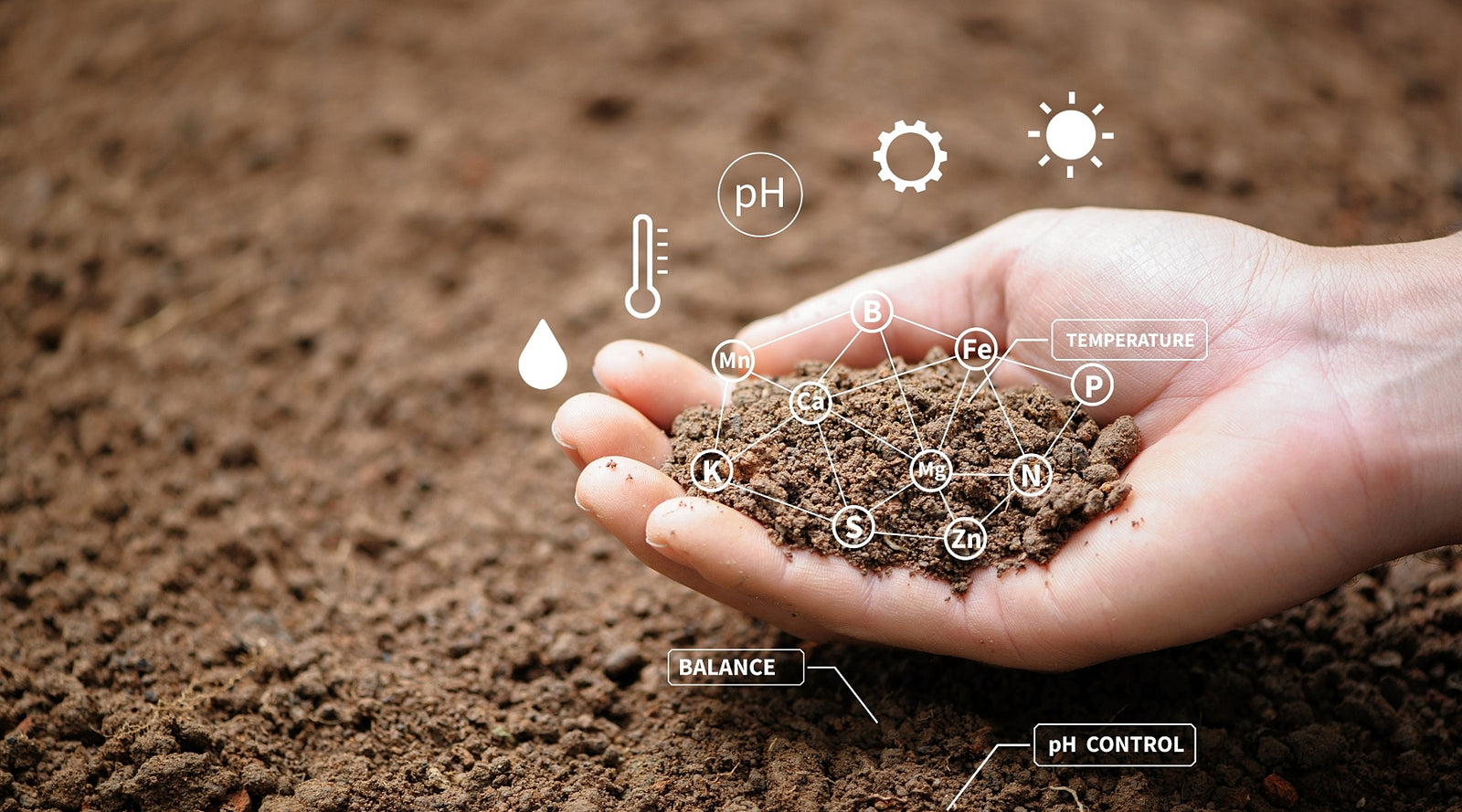When it comes to our health, one of the most important factors is the food we eat. Soil quality plays a major role in food quality. Yet, soil across the globe has become depleted, driven in large part by increasing consumer consumption. The global population is ballooning while climate variability and conflict are making farming more difficult.
In 1950, the world population was estimated at around 2.6 million people. In 1999, it hit 6 billion, and by 2050, an estimated nearly 10 billion people are expected to be living on earth. This dramatic population growth is happening partly because we're living longer. But at the same time, our soil and food are becoming less sustainable than ever. In many cases, the food industry is driven by profit and not by human or environmental well-being.
If you're trying to enhance your health by improving your diet, it can be easy to get overwhelmed by the array of labels: organic versus non-organic, grass-fed versus grain-fed, farmed fish versus wild fish. To make the best food choices for you, it's important to understand how soil quality has deteriorated over the years and what that means for our food.
For several reasons, soil today has fewer minerals and nutrients than it did in the past. With consumer consumption growing, over-farming is on the rise — practices that don't give the land time to rest or involve planting non-commercial crops that replenish the soil.
Rotating crops help keep the soil nutrient levels high and can also help prevent certain types of pests from taking over. But crop rotation often requires farmers to invest in lower-yield or non-food crops, and that can translate into fewer earnings. As a result, many farmers stick to repeated plantings of a single crop in order to make a living, and the soil structure deteriorates.
What's more, an increase in the production of high-demand crops, like varieties of corn and soybeans, has come at the expense of other fruits and vegetables being grown, resulting in less diversity in overall food production.
Pesticides also contribute to poorer soil quality. Pesticide is a catch-all term for chemicals that eliminate weeds, insects, bacteria, fungi or other organisms that attack crops.
To produce a higher volume of food at a lower cost, many farmers use pesticides, which seep into the soil and into the plants growing in it. Several common agricultural pesticides are intended to destroy the nervous systems of the insects they target, but they're deemed safe for humans because the microdoses of them in our food won't kill us. However, there is a lack of long-term studies on what happens to our health after eating foods grown with pesticides for 30, 40 or 50 years.
Every year, the Environmental Working Group (EWG) comes out with the "Dirty Dozen" food list of the twelve fruits and vegetables most susceptible to pesticides even after washing. The 2022 list includes strawberries, spinach, kale, collard and mustard greens in the top three. They also release the "Clean Fifteen" food list, which outlines fifteen fruits and vegetables with the least or no trace of pesticides after washing. The top three in 2022 include avocados, sweet corn and pineapple. It is recommended that any produce from the Dirty Dozen list only be bought organic, and if that is not possible to focus on those foods from the Clean Fifteen to reduce exposure to these toxins where possible.
Poor soil quality can also impact meat quality, particularly when livestock eats grain and soy that have been grown in depleted soil or with pesticides.
While research already shows that the overconsumption of red meat may pose health issues in the long run for some people, a small amount can be beneficial. If you eat meat, your best option is to avoid grain-fed meat. Often, these animals are fed wheat, soy and even candy like Skittles, and are given antibiotics and hormones for purposes like growth or disease resistance.
The best meat to consume is grass-fed or pasture-raised because even organic (a U.S. Department of Agriculture certification) can be deceptive. Organic meat means the cow ate organic grains and forage, but it wasn't necessarily free-roaming.
When you buy meat, always ask if the cut is 100% grass-fed and grass-finished or pasture-raised. Some farmers have taken to calling their meat grass-fed while feeding their animals grain for the last few months of theirlives.
When it comes to fish, and salmon, in particular, wild salmon is better than farmed because it has higher levels of omega 3s, fewer genetic variations, and it doesn't include the chemical dye that some farmers use to turn their farm-raised salmon pink.
Now that you know industrial farming practices can deplete the soil, resulting in unhealthier foods, what can you do about it?
As you figure out how to source the healthiest, most nutrient-rich foods, with a simple at-home lab test, you can find out whether you have adequate levels of minerals or are running low on these essential nutrients and also identify if there is a build-up of toxic heavy metals from diet and lifestyle factors that could be behind some of the health issues you are experiencing. Completing an annual heavy metal detox can help reduce your toxic load and improve your overall detoxification capacity to unavoidable exposure to toxins.
To learn more about why we have to consider the quality of the food when it comes to our health, listen to this podcast that explains the link between soil depletion and lowered food quality resulting in common nutrient deficiencies.
